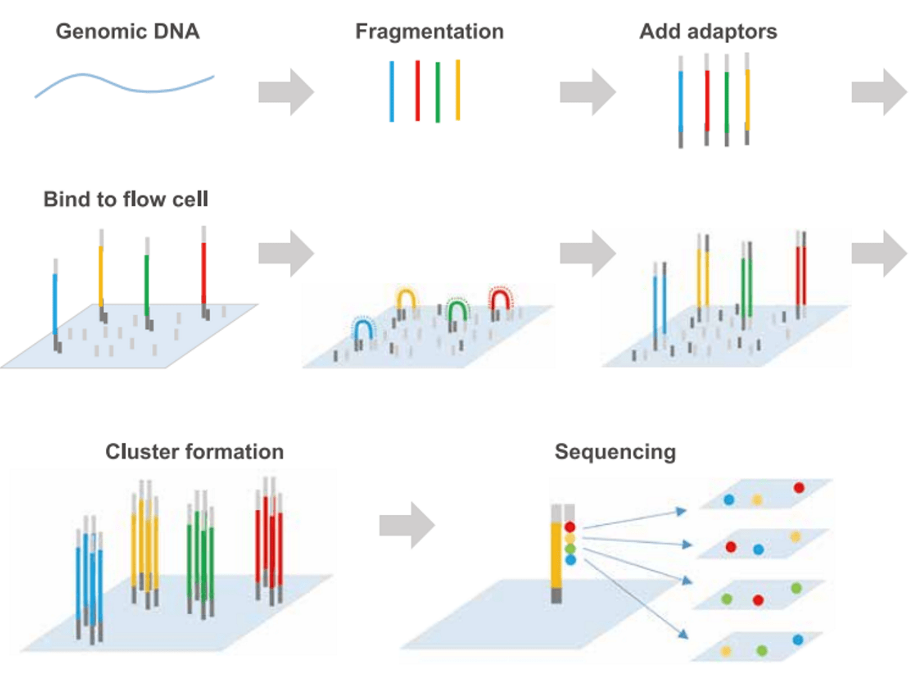Definitions play a crucial role in technical writing as they serve as a foundation for clear and precise communication. The objective of assignment 1:3 is to understand the significance of definitions in technical writing, and how audience and purpose indicate the need for definition. Therefore, students are required to write a parenthetical, sentence, and expanded definition for a complex term used within the students’ discipline or profession, while taking into consideration the situation and audience.
Situation and Audience
A professor of a first-year genetics class is explaining Illumina sequencing to first-year university students during a lecture.
Term
Illumina sequencing.
Parenthetical Definition
Illumina sequencing (a technique used to determine the series of base pairs in DNA) can be used to determine the DNA sequence of an organism’s entire genome in one experiment.
Sentence Definition
Illumina sequencing is a sequencing technology that uses reversible terminators to identify the order of nucleotides in a sequence, one at a time.
Expanded Definition
History
Illumina sequencing technology was first developed in the late 1990s by a company then called Solexa, later acquired by Illumina Inc. in 2007 (Illumina, n.d.). The early versions of the technology required significant computational power to sequence a whole genome. However, Illumina has made significant improvements to the technology, which has led to its widespread adoption in genomics research. By the mid-2010s, it had become the dominant sequencing technology, offering low-cost sequencing with increased accuracy (Bronner et al., 2013). The technology has since been further improved, making it accessible to a wider range of researchers and applications.
Sample Preparation
The purpose of sample/library preparation is to obtain nucleic acid fragments that have adaptors attached to them. Adaptors are short nucleic acid fragments that contain three distinct segments: a barcode sequence (index), a sequence complementary to the solid surface, and a sequence complementary to the primer. These sections serve different purposes: enabling the pooling of multiple samples in one experiment, securing the DNA fragments to a solid surface, and facilitating the binding of primers (short sequences that are used to initiate DNA synthesis) (Illumina, n.d.).
Operating Principle
Illumina sequencing technology follows the principle of massively parallel sequencing (also known as next-generation sequencing), which is a method of sequencing large amounts of DNA simultaneously in a single experiment. This is achieved by fragmenting the DNA into many small fragments, which are then independently copied and sequenced in parallel (Illumina, n.d.). The result is millions or billions of short DNA sequences, called “reads,” which can be assembled into longer sequences to obtain a complete genome sequence.
Procedure
The process of Illumina sequencing involves several steps, including:
- Sample preparation: DNA is fragmented into small pieces and then subjected to a series of reactions to add adapters to both ends of the fragments.
- Cluster generation: DNA fragments are repeatedly copied to form clusters of identical DNA fragments immobilized on a solid surface.
- Sequencing: For each DNA fragment, DNA polymerase extends the primer and adds nucleotides one by one, with each incorporation being detected by a fluorescence signal.
- Image acquisition: The fluorescence signals are captured by a laser and translated into raw image data, which is then processed to identify the sequence of each fragment.
- Data analysis: The sequences are assembled into longer sequences to generate a complete genome sequence.

Figure 1. Illumina Sequencing Process (GenScript, n.d.)
Comparison and Contrast
Illumina sequencing makes it possible to sequence entire genomes in a matter of days or weeks, whereas traditional sequencing methods could take years. This enables researchers to study complex genomes at an unprecedented speed.
References
- GenScript. (n.d.). Advancing genomics, medicine and health together – by semiconductor DNA synthesis technology. GenScript. Retrieved February 8, 2023, from https://www.genscript.com/advancing-genomics-medicine-and-health-together-by-semiconductor-dna-synthesis-technology-summary.html
- History of Illumina sequencing. History of Illumina Sequencing & Solexa Technology. (n.d.). Retrieved February 7, 2023, from https://www.illumina.com/science/technology/next-generation-sequencing/illumina-sequencing-history.html
- Next-Generation Sequencing (NGS). Next-Generation Sequencing (NGS) | Explore the technology. (n.d.). Retrieved February 7, 2023, from https://www.illumina.com/science/technology/next-generation-sequencing.html
- Bronner, I. F., Quail, M. A., Turner, D. J., & Swerdlow, H. (2013). Improved protocols for illumina sequencing. Current protocols in human genetics, 79(1), 18-2.
Leave a Reply